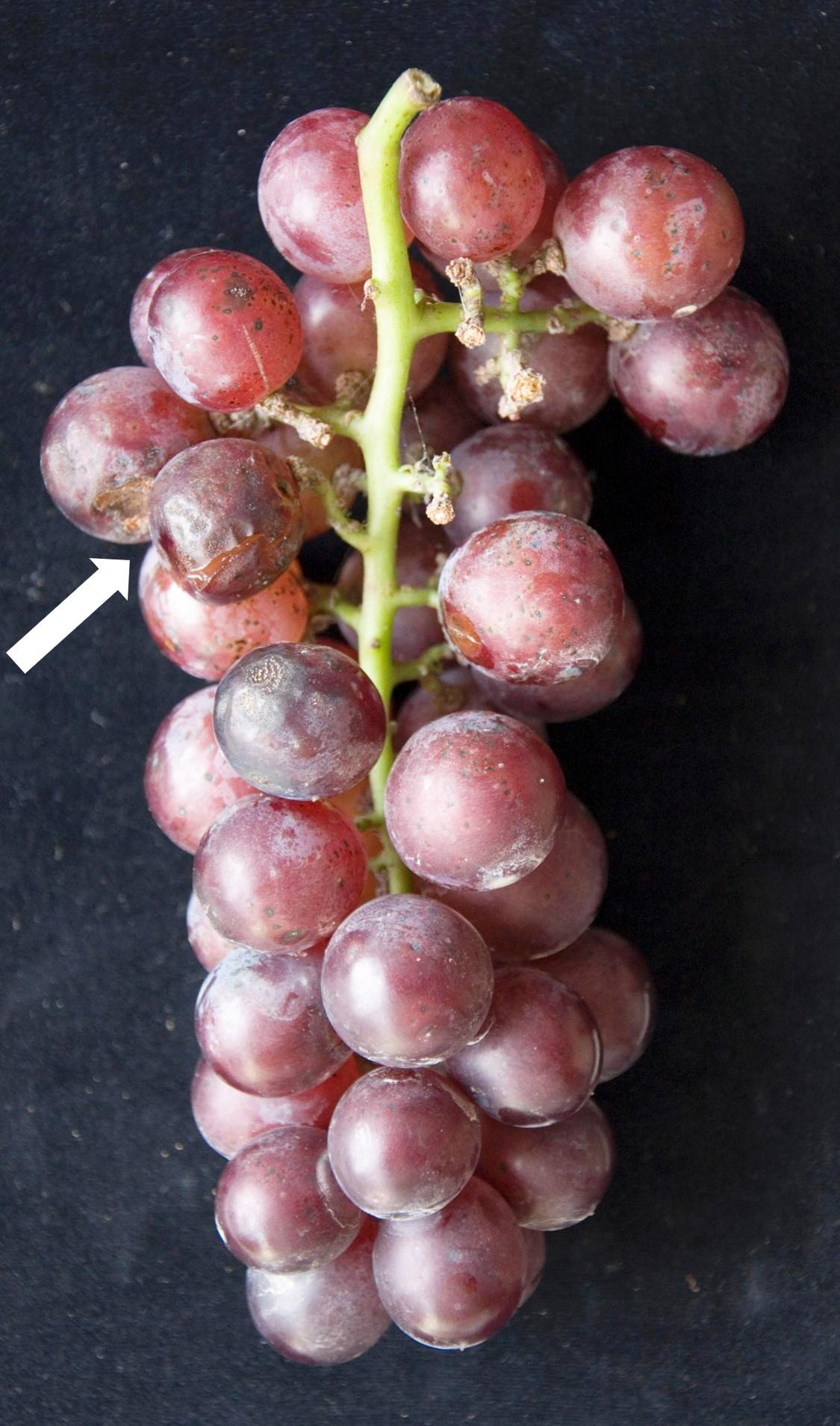Ripe Rot of Grapes
Return to Diseases
Ripe rot (Colletotrichum spp.) is a fungal disease that causes berry rot during ripening. All berry stages are susceptible to infection, but symptoms develop as berries mature (after veraison). Early symptoms include circular reddish-brown spots that enlarge to cover entire berries. Salmon-colored masses of spores (conidia) appear during wet weather. Infected berries remain attached to vines until the entire berry is rotted; berries eventually shrivel to mummies. The fungus overwinters in mummified fruit and infected pedicels. Bitter rot is usually not a problem in well-maintained orchards when fungicides are used to manage other diseases.

Ripe rot (arrow points to infected berries).
(Photo: Yuan-Min Shen Taichung District Agricultural Research and Extension Station, Bugwood.org)
Management:
- Practice proper sanitation (remove infected fruit; destroy mummies).
- Increase air circulation to encourage drying of plant tissues (pruning, thinning, spacing, managing weeds).
- Apply fungicides to manage other diseases.
